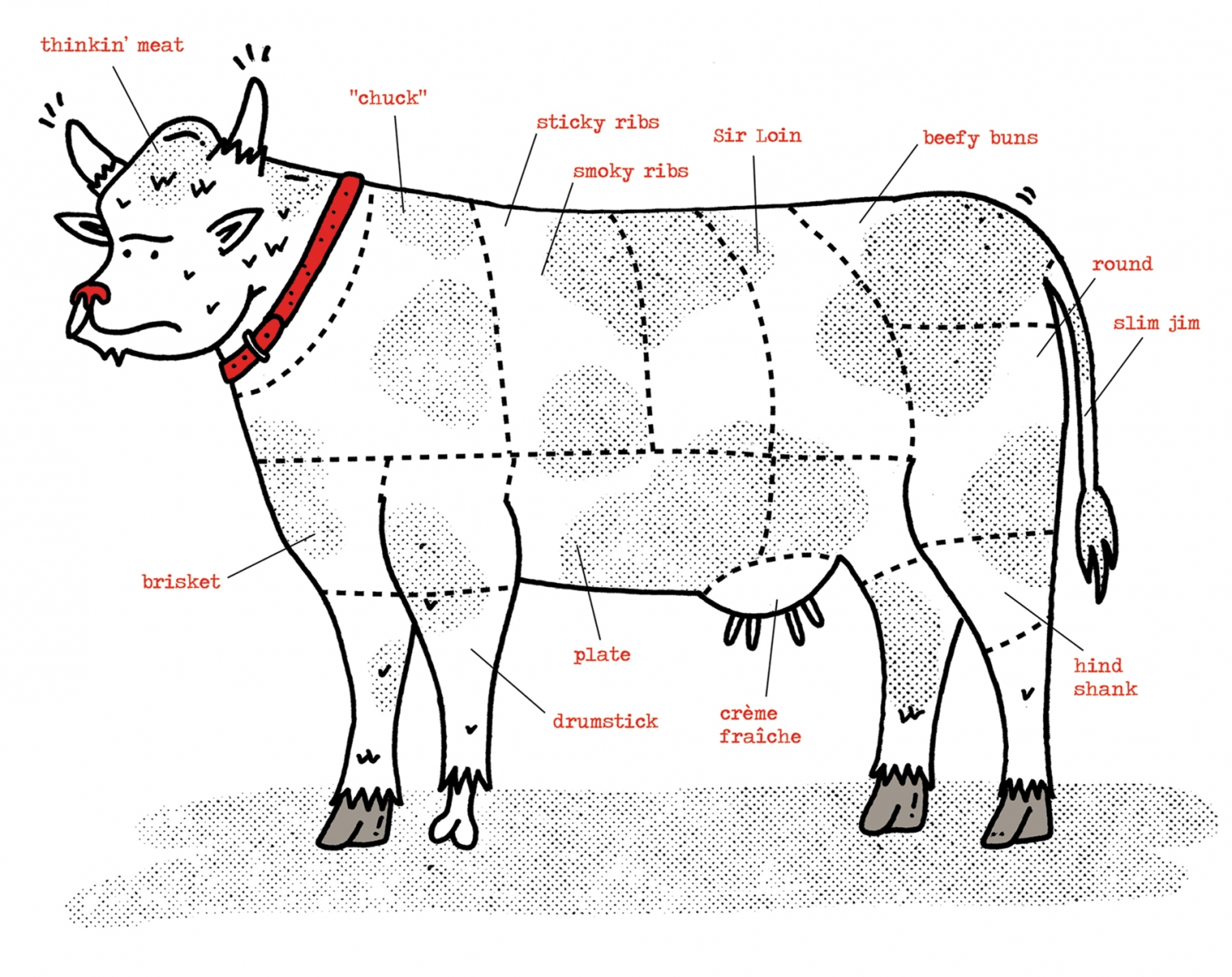Here in Alberta, it’s all about the beef.
There are hundreds of different cuts of beef that are broken down into categories like primal and sub-primal cuts. The different categories of cuts have distinctive characteristics based on the amount of muscle tissue. For a cut like the chuck, there are 13 cuts just within that category. So where do you start? At Real Deal Meats Ltd., owners Alicia and Darcy Boisvert have hundreds of people come though their doors each week. The most popular item is the ribeye. At a close second, tenderloin – and then sirloin. Here, the Boisverts explain some of the different cuts and how to handle them.
Common and Uncommon Cuts
The most common cuts are the steak cuts like tenderloin, ribeye, New York strip loin, rib steak, top sirloin and T-bone.The not-so-common cuts include flank steak and brisket.
Masterful Preparation
Certain cuts are tougher to begin with and require a bit of finesse in preparation. For example, marinating a flank or skirt steak can help tenderize the meat. A good tip for this type of cut is to cut across the grain. The muscle fibres are minimized when cut against the grain. This will leave you with tender slices rather than chewy meat.
Be Patient
Rest your steak for five minutes and a roast for 15 to 20 minutes once cooking is completed. This will hold in the juices and moisture – giving you the tenderness you desire.
Season with Care
Blair Lebsack, chef and owner of RGE RD, says different cuts need to be treated differently and can deliver different flavours when compared to other cuts.
For a cut like a strip loin and ribeye, just add salt and pepper and let the flavour of the meat shine.
When it comes to a flank and skirt steak, Lebsack likes to do a marinade for about an hour before cooking. Those types of cuts do hold up to strong flavours like rosemary or chili oil. Then, of course, add a liberal hit of salt before cooking.
For a round roast, use a dry rub of fresh herbs, salt and pepper. Then, with the tip of a knife blade, make a few small pockets where you can stuff a whole clove of garlic into each one. The garlic roasts inside, releasing a wonderful aroma and, when the beef is sliced, you get roast garlic in some bites.
